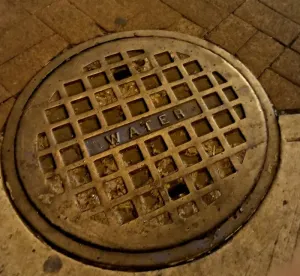DEP published its Green Infrastructure Stormwater Rule in the New Jersey Register on March 2, 2020. The amendments followed an extended public stakeholder and internal review process spanning several years. The amended rules replace the nonstructural stormwater management strategies provisions of the prior rules, which were subjective and often led to inconsistent results, with specific green infrastructure BMPs to address stormwater quality and quantity. The amended rules have a delayed implementation date and will become effective March 2, 2021, one year after adoption, to allow sufficient time for municipalities to conform stormwater ordinances and to allow a phase in period for pending projects. Projects in the pipeline already designed in accordance with the existing rules should be in a position to avoid having to redesign, but will need to take diligent action to obtain approval or submit applications and be declared administratively and technically complete prior to the March 2, 2021 effective date. For those in the early planning stage of development, critical decisions will need to be made whether to design in accordance with the amended green infrastructure provisions. If an approval is being sought for a project with a stormwater management system that does not incorporate green infrastructure, immediate action should be taken to ensure sufficient time to obtain a completeness determination or approval from DEP prior to the implementation date of the amended rules.
A summary of some of the noteworthy amended rule provisions is provided below.
-
DEP proposed amendments on December 3, 2018 to its Stormwater Management rules at J.A.C. 7:8-1.1 et seq. These “Phase I” rule amendments took on more immediate significance in the aftermath of the decision finding that DEP’s use of the non-structural point system checklist violated the APA because it was not adopted by regulation.
-
The amendments replace the requirement that “major developments” use nonstructural strategies to the maximum extent practicable with a requirement that major developments use “green infrastructure” practices designed in accordance with the Stormwater BMP Manual, such as pervious paving, infiltration basins, and bioretention systems, or as otherwise approved, to meet water quantity, water quality, and groundwater recharge standards. The nonstructural strategies remain in the rules (section 2.4)g)) for consideration in the municipal planning context.
-
In the Response to Comments portion of the Rule Adoption, DEP rejected assertions made by various environmental organizations that over 90% of the State’s waters have been found to be impaired under Integrated Water Quality Monitoring and Assessment Reports. DEP also rejected calls for implementation of land use controls and buffers in the Stormwater Rules, noting they are addressed through DEP’s various other regulatory programs.
-
With respect to determining whether a project is a “major development”, the rules clarify that the relevant amounts of cover and/or disturbance are the cumulative amounts that have occurred since February 2004.
-
The green infrastructure provisions of the rules and BMP Manual place a premium on treatment of stormwater runoff near its source to mimic natural hydrogeologic processes, and require stormwater facilities to be designed based on small-scale, limited contributory drainage areas (2.5 acres and 1 acre limits) except in limited circumstances where a limitation on contributory drainage area is not applicable. The rules also recognize the impracticability of requiring water quantity standards to be met exclusively through small-scale green infrastructure for larger sites, and allow for use of a combination of BMPs that are not subject to limitations on contributory drainage area. Structural stormwater management measures will continue to be incorporated into project stormwater management design where appropriate, for example, to reduce stormwater runoff velocity.
-
The rules allow for a demonstration that implementation of green infrastructure is not technically feasible, but do not allow for cost considerations in that context. DEP also rejected calls for adoption of a broader variance or waiver process.
-
Corresponding changes have been made to DEP’s Stormwater BMP Manual, which now includes provisions for Green Roofs and Cisterns. Additional BMP updates are anticipated to address various provisions of the amended Rules including soil testing requirements for sites with multiple green infrastructure BMPs. DEP does not currently treat the BMP Manual as a rule subject to formal rulemaking notice and comment, although DEP typically engages in a stakeholder notice/comment process for amendments of the Manual.
-
The amended rule requires the recording of a deed notice describing and identifying the location of all approved stormwater management systems, in addition to the previously existing requirement for filing of Stormwater Management plans.
-
The amendments expand the definition of “major development” for purposes of projects subject to DEP stormwater review. The concept of major development is not changed for purposes of municipal stormwater management plans.
-
Major development for purposes of DEP stormwater review will include the proposed addition of one-quarter acre of motor vehicle surface, defined to include both pervious and impervious surfaces intended to be used by motor vehicles/aircraft and that are exposed to precipitation. For motor vehicle surfaces, DEP will look only to surfaces added after the March 2, 2021 operative date of the rules; however, as noted above, for the general disturbance and impervious cover thresholds, DEP will look to cumulative amounts of disturbance and new impervious cover since February 2, 2004 in determining whether a proposed project is a “major development”. Certain alterations of existing stormwater management systems affecting the functionality of such systems may also be considered major development even if the disturbance and impervious cover thresholds are not met
-
DEP is currently engaged in another stakeholder process to discuss additional, more comprehensive proposed changes to the Stormwater Management rules regarding stormwater facility design and maintenance. It is anticipated this “Phase II” rule amendment process will take place throughout this calendar year. DEP notes numerous topics in its Response to Comments to be considered in the Phase II rule amendment process, such as climate change impacts, potential changes to numeric runoff quantity and quality standards for new and redevelopment sites, and TMDLs.
-
The amended Rules (section 5.5(c)) require water quality treatment for sites discharging to a combined sewer overflow. With respect to water quantity treatment, sites in a tidal flood hazard area must now meet quantity requirements unless analyses demonstrate that flood damage will not increase below the point of discharge or where stormwater is discharged directly into a tidal water body. For combined sewer overflows, this means water quantity may need be addressed and attenuated before discharge into the combine sewer system.









 />i
/>i
